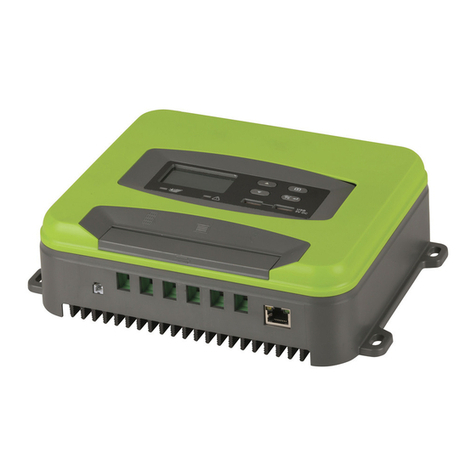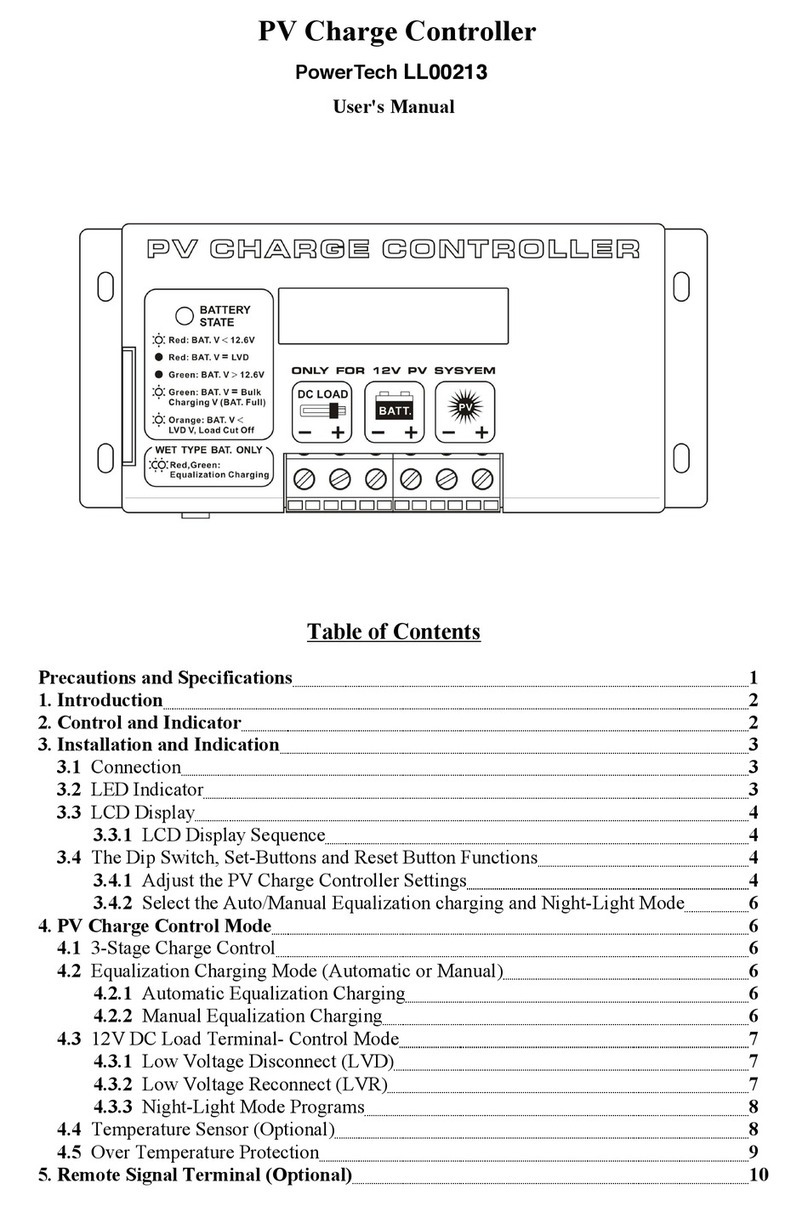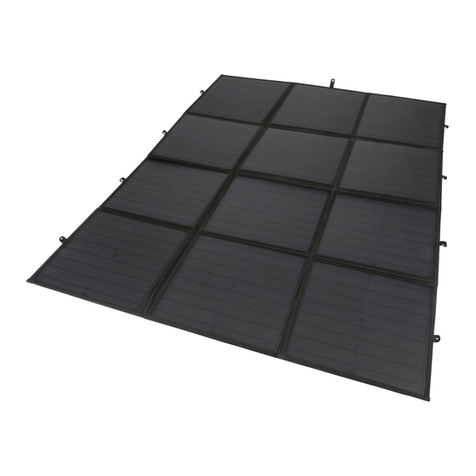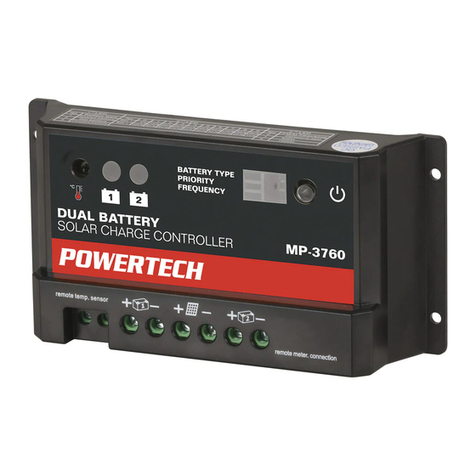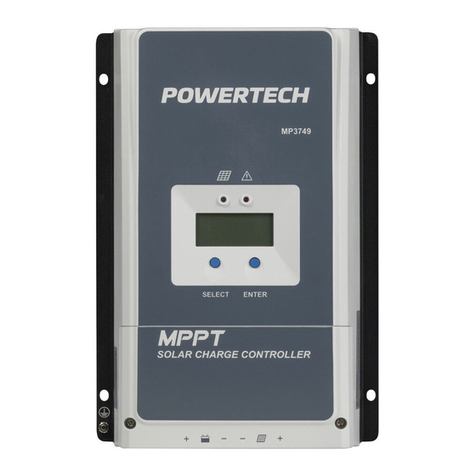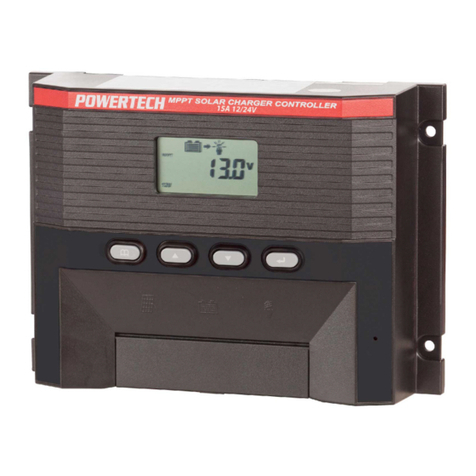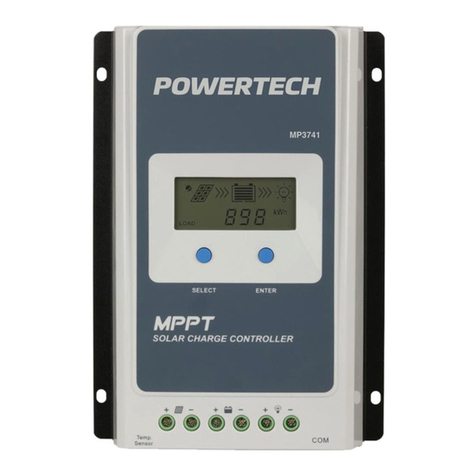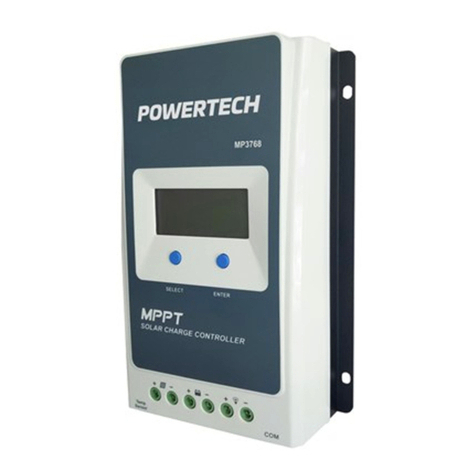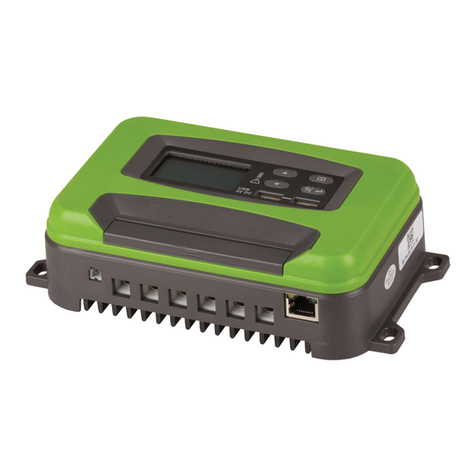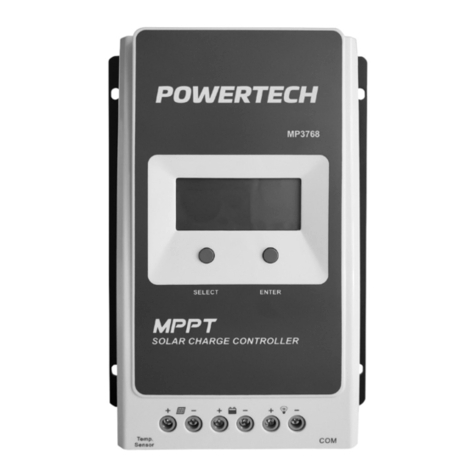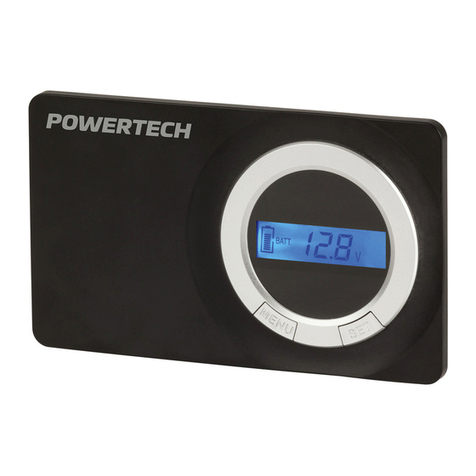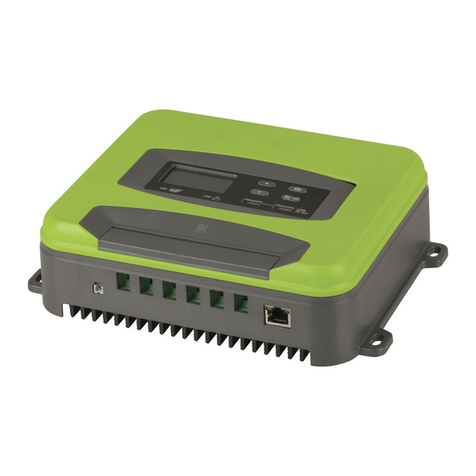8
6. Temperature Compensation
The charge voltage changes with battery temperature.
Temperature compensation of charge voltage leads to
increase battery life and decrease battery maintenance. MP-
3735 is supplied with a 3 meter temperature sensor cable for
the provided external battery temperature sensor. Charge
voltage will continuously adjust to the proper value based on
actual battery temperature, which ensures that the battery
receives the proper charge voltage as battery temperature changes during the normal operation.
MP-3735 has both internal and external temperature sensor to detect the ambient temperature. The
controller defaults to use internal temperature sensor if external temperature sensor cable is not
connected. Once the external temperature sensor cable is connected, the controller will automatically
switch to the external temperature sensor.
The graph below shows how the MP-3735 would use the external temperature sensor to adjust the Float
Voltage based on the ambient temperature.
Installation
Danger of explosion from sparking! Danger of electric shock!
Only install the controller near the battery on asuitable surface. This surface should be solid,
stabile, even, dry and nonflammable.
The battery cable should be as short as possible (1-2m) and have asuitable cable diameter size for
minimum loss.(Recommended cable for MP-3735 is 25 sq.mm and 2mlength)
Do not install MP-3735 outdoors, the unit should be installed so that it is protected against
humidity, dripping, rainwater as well as direct and indirect warming from sunlight.
To ensure proper air circulation for cooling MP-3735, an area of 15cm on each side of the MP-3735
must be kept free.
The LCD display should be protected against UV rays(e.g. sunlight). Long time exposure to UV
rays can permanently discolor the LCD
The solar charge controller may onlybe connected to the local loads and the battery by qualified
personnel and in accordance with the applicable regulations.
Follow the installation and operating instructions for all components of the PV system.
Ensure that no cables are damaged.
Ensure that polarity of Solar panel/battery/load is connected in proper way.
Ensure all terminations are secure and clean.
